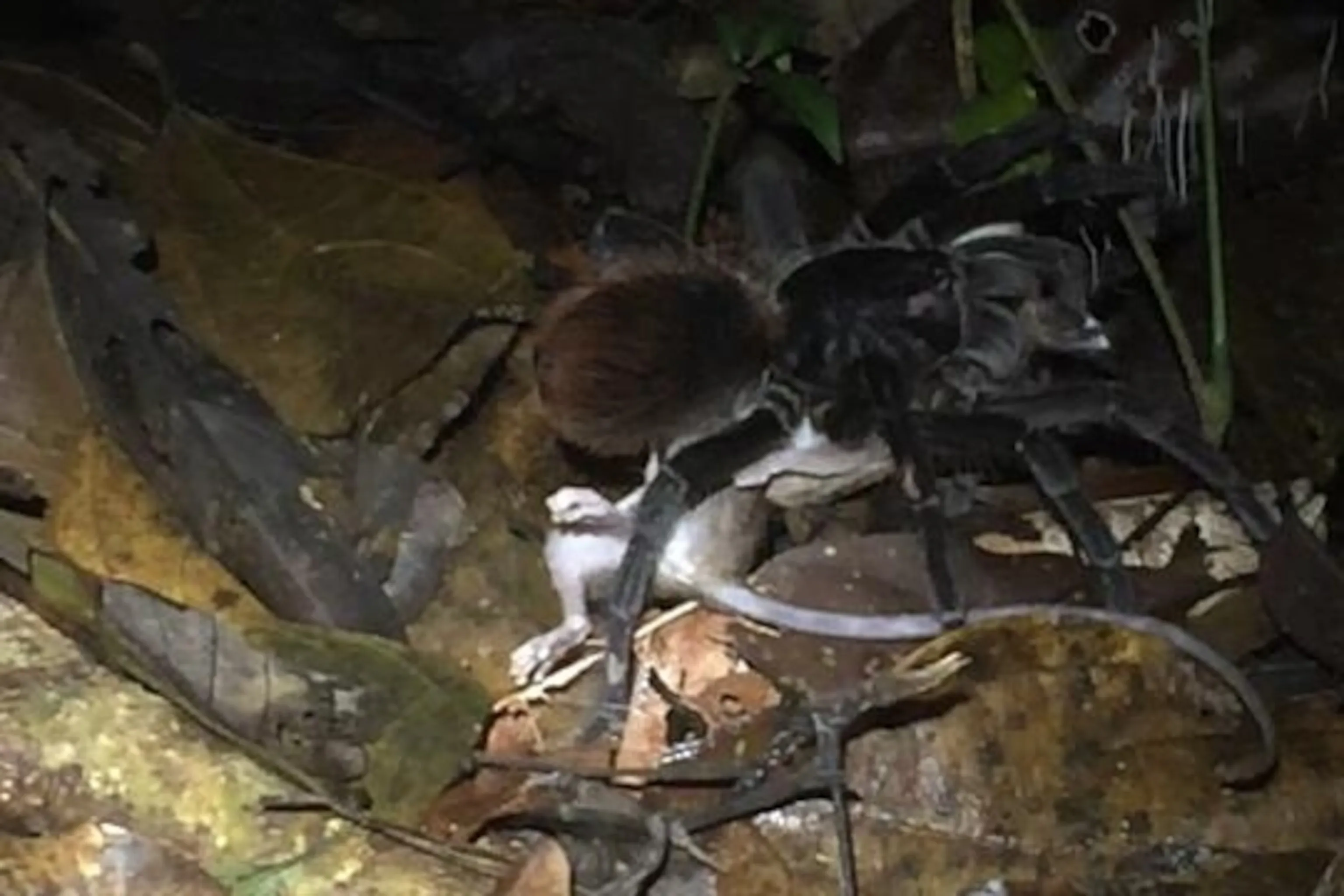What is a Zebra Tarantula?
The Zebra Tarantula, scientifically known as Aphonopelma seemanni, is a fascinating arachnid native to the tropical dry forests of Central America, particularly Costa Rica and Nicaragua. These spiders are known for their striking appearance, characterized by black and white striped legs that resemble a zebra’s pattern, hence the name. As popular pets, these spiders offer a unique glimpse into the world of invertebrates. Understanding their eating habits is crucial for their care and well-being. They are relatively docile and well-suited for beginner tarantula keepers, making them a great option for those new to the hobby. Their beauty and manageable temperament have made them a favorite among spider enthusiasts worldwide.
Appearance and Characteristics
The defining feature of the Zebra Tarantula is its distinctive black and white striped legs, providing an excellent camouflage in their natural habitat. Their bodies, typically dark brown to black, contrast sharply with their legs. These spiders possess a hairy body, which aids in sensory perception and helps in navigating their environment. The females are generally larger than the males, with a lifespan that can extend up to 20 years, while males usually live for about 5-7 years. Their size, combined with their striking coloration, makes them an eye-catching pet. They have a moderate size, which adds to their appeal for owners who are looking for something manageable. Their overall appearance is both beautiful and unique.
Size and Lifespan
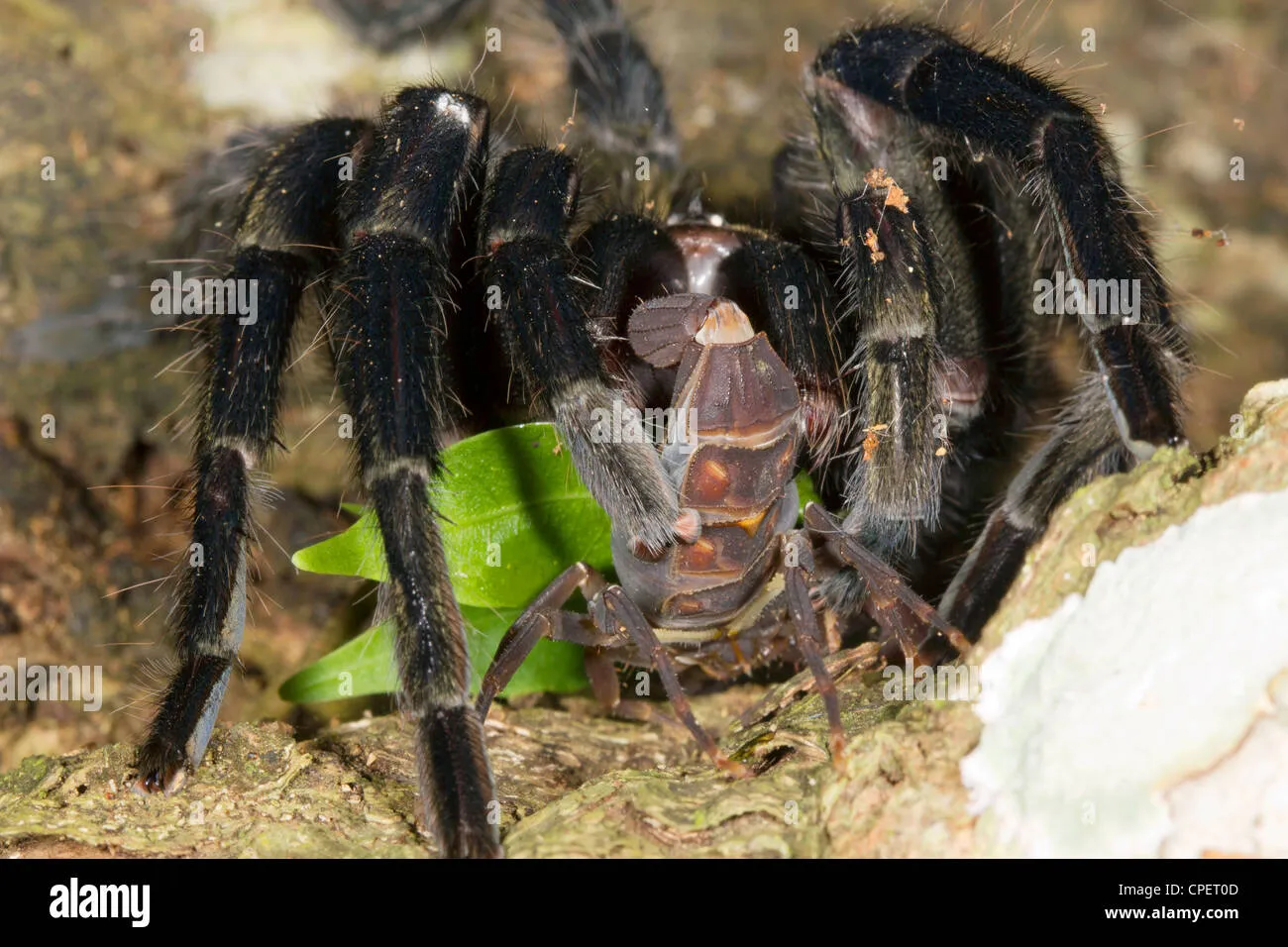
Zebra Tarantulas are considered a medium-sized tarantula, with a body length that can reach up to 2.5 inches, and a leg span of up to 5 inches. The size can vary slightly depending on their environment and individual genetics. As mentioned earlier, female Zebra Tarantulas have a longer lifespan, living up to 20 years. In contrast, males typically live for a shorter duration, around 5-7 years, due to their role in mating and the stress that comes with it. Understanding the size and lifespan of a Zebra Tarantula is crucial for providing adequate housing and care, as well as for making a responsible decision to keep one as a pet. Their growth rate also varies, usually, it takes several years to reach their full size.
What Do Zebra Tarantulas Eat?
Zebra Tarantulas are primarily insectivores, meaning their diet consists mainly of insects. In the wild, they are opportunistic feeders, consuming a variety of insects and small invertebrates. In captivity, their diet can be carefully managed to ensure they receive all the necessary nutrients. The type of food they eat significantly impacts their health and overall well-being. Therefore, providing a balanced diet is an essential aspect of caring for these spiders. Knowing what they eat is the key to replicating their natural diet and ensuring they thrive in a captive environment. They are not picky eaters and will readily accept a variety of insects.
The Zebra Tarantula’s Diet
The diet of a Zebra Tarantula in the wild consists mainly of insects and other small invertebrates. They are natural predators, equipped with the necessary hunting skills and venom to subdue their prey. Their eating habits are adapted to their environment, ensuring they consume readily available food sources. Replicating this diet in captivity involves providing them with a consistent and varied supply of suitable food items. This ensures they receive all the essential nutrients for their growth and health. The key to a healthy tarantula is a well-balanced diet that mimics what they would eat in their natural habitat. Variety in the diet is important as well.
Insects
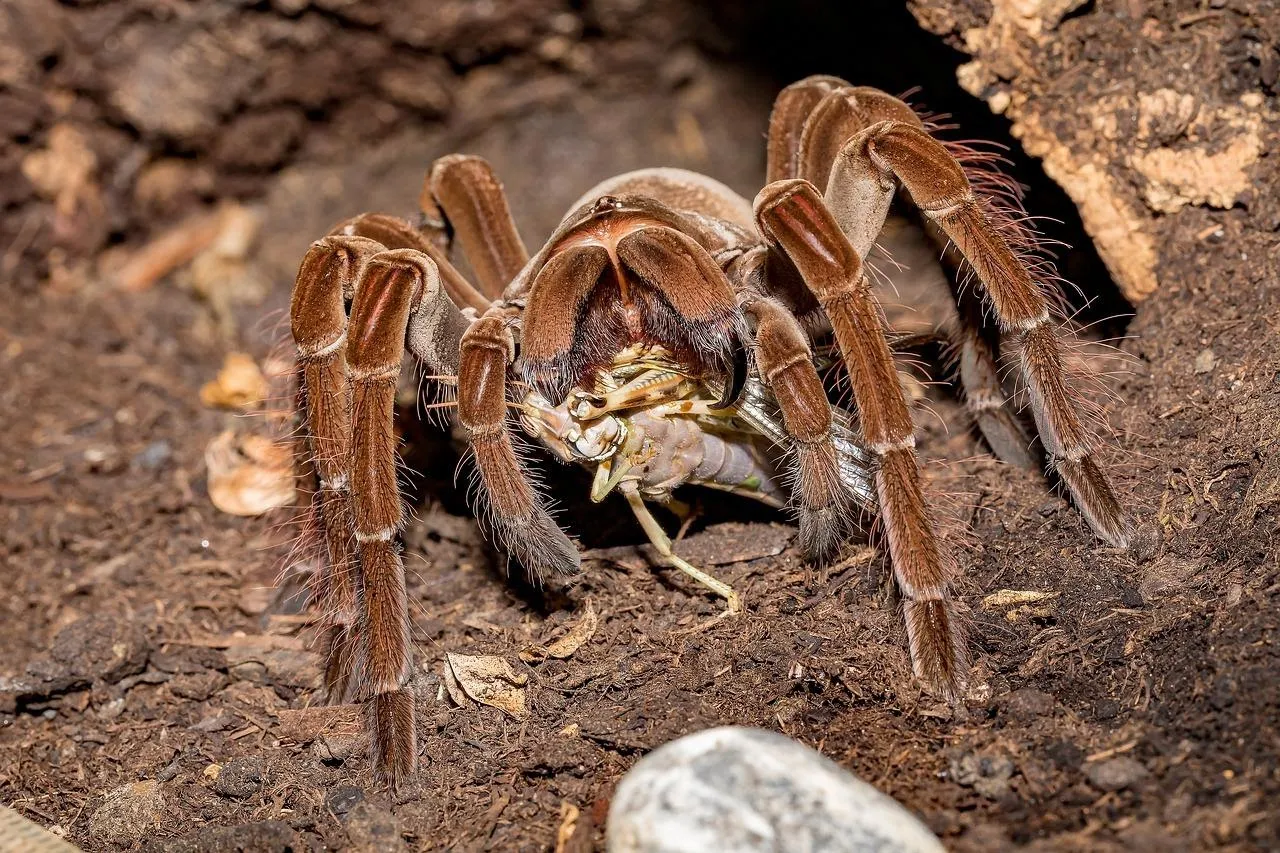
Insects form the cornerstone of a Zebra Tarantula’s diet. Crickets and mealworms are two of the most popular choices, readily available in pet stores. They are easy to procure and store, making them convenient for keepers. Roaches, such as Dubia roaches, are another great option because they are highly nutritious and provide a good source of protein. Feeding insects of the appropriate size is crucial, usually smaller than the tarantula’s body. The size of the food is directly related to the size of the spider. Varying the insects also provides a wider range of nutrients. Proper insect care is also important, which should include gut-loading the insects before feeding them to the tarantula. This involves feeding the insects nutritious food, so the tarantula can get more vitamins and minerals.
Other invertebrates
In addition to insects, Zebra Tarantulas may occasionally consume other invertebrates in the wild. These can include small spiders or other arthropods that they encounter. However, in captivity, this part of their diet can be less crucial. Some keepers may choose to offer small invertebrates as a treat. It’s crucial to avoid feeding any invertebrates that might be toxic or carrying parasites. The main focus should remain on providing a balanced diet of insects. Keepers should be cautious about introducing any potential risks to the tarantula’s health through food choices. It is important to research thoroughly before offering invertebrates.
How Zebra Tarantulas Hunt
Zebra Tarantulas are ambush predators, meaning they lie in wait for their prey. They typically do not actively hunt but instead rely on their patience and keen senses to detect movement. Their camouflage helps them blend in with their surroundings. Once a potential meal comes close, they strike swiftly and decisively. The hunting strategy is an efficient adaptation to their environment, ensuring they can successfully catch food. They are well-equipped with all of the biological and physical needs to hunt and eat their prey. Their hunting skills are a testament to their survival strategies.
Ambush Predators
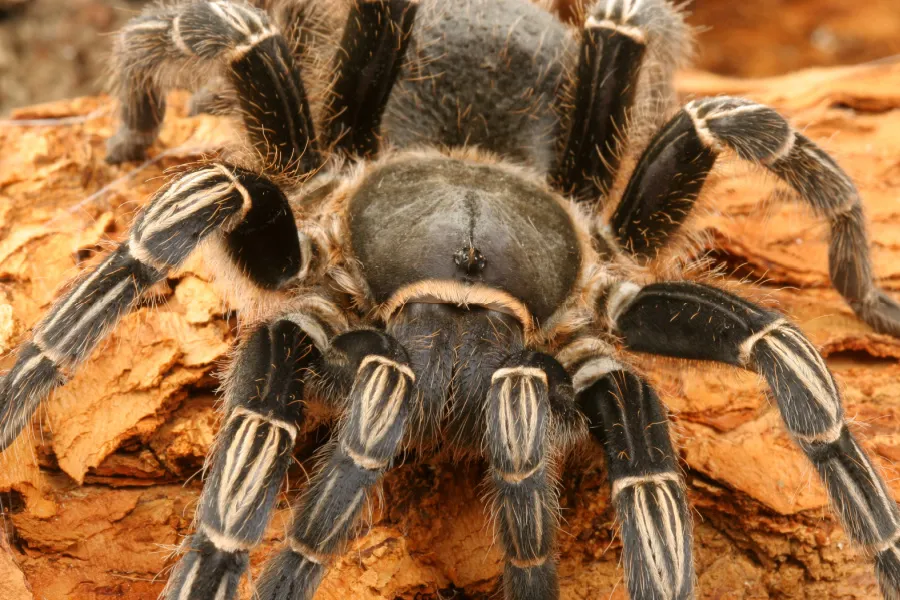
As ambush predators, Zebra Tarantulas have adapted to wait for their prey to come within striking distance. They usually stay in their burrows or hideouts. They are patient hunters, waiting for the opportune moment to strike. This strategy conserves their energy, which is important for their survival. Their ability to remain still for extended periods allows them to surprise their prey. Their hunting technique demonstrates their resourcefulness. This ambush approach is very effective.
Venom and its effect
Zebra Tarantulas possess venom that they use to subdue their prey. The venom is not considered medically significant to humans, meaning a bite would likely cause only mild symptoms similar to a bee sting. Their venom is primarily used to immobilize and begin the digestion of their food. The venom is injected through the fangs. The venom’s composition is designed to break down the prey, making it easier to consume. Understanding the venom’s role is important for pet owners, providing them with the knowledge they need to handle them safely. The effect on humans is typically mild, but it is still recommended to exercise caution.
Feeding Your Zebra Tarantula
Feeding a Zebra Tarantula in captivity is a simple process, but it’s important to do it correctly. Proper feeding ensures that the tarantula remains healthy and thrives. The frequency of feeding, the type of food, and the provision of water all play vital roles. This helps replicate their natural behavior in the wild, ensuring they get the proper nutrients. Attention to detail is key when it comes to the diet, from the insect selection to the water source. This provides a good foundation for healthy growth.
Feeding Frequency
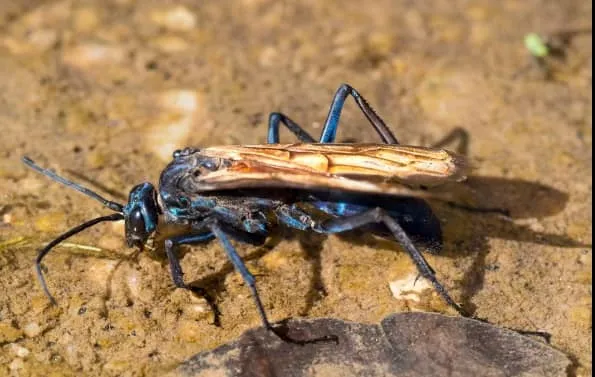
The feeding frequency for Zebra Tarantulas varies based on their age and size. Spiderlings, or young tarantulas, should be fed more often, generally 2-3 times a week, to support their growth. As they mature, the feeding frequency can be reduced to once or twice a week. Adults can often be fed once a week or even less frequently. It is important to observe your tarantula’s behavior and adjust the feeding schedule accordingly. Overfeeding can lead to health issues, so it’s essential to feed them only what they will eat. Regularly monitor their appetite and body condition to maintain a proper feeding schedule. Adjust the feeding schedule based on the individual spider’s needs.
Choosing the Right Food
When choosing food for your Zebra Tarantula, it’s important to select insects that are appropriately sized. The prey should be no larger than the tarantula’s body. Crickets and mealworms are popular choices, but it’s crucial to gut-load the insects before feeding them to your tarantula. Gut-loading involves feeding the insects nutritious food, so they pass on the nutrients to your pet. Variety is important, so rotate different types of insects to provide a balanced diet. Also, avoid feeding insects that have been exposed to pesticides or chemicals. Ensure the food is healthy, and the right size to keep your Zebra Tarantula in top condition. Proper food choice is critical for overall health.
Providing Water
In addition to food, Zebra Tarantulas need access to a constant supply of fresh water. Provide a shallow water dish, such as a bottle cap or a small dish made for reptile keeping. It’s important to keep the water clean and change it regularly to prevent bacterial growth. Some keepers also provide a damp substrate, which helps to maintain humidity levels and also offers another source of water for the tarantula. Ensure that the water dish is accessible but shallow enough to prevent drowning. Clean water is essential for the tarantula’s health and hydration. Regular maintenance of the water source will greatly contribute to their well-being.
Interesting Facts about Zebra Tarantula Eating Habits
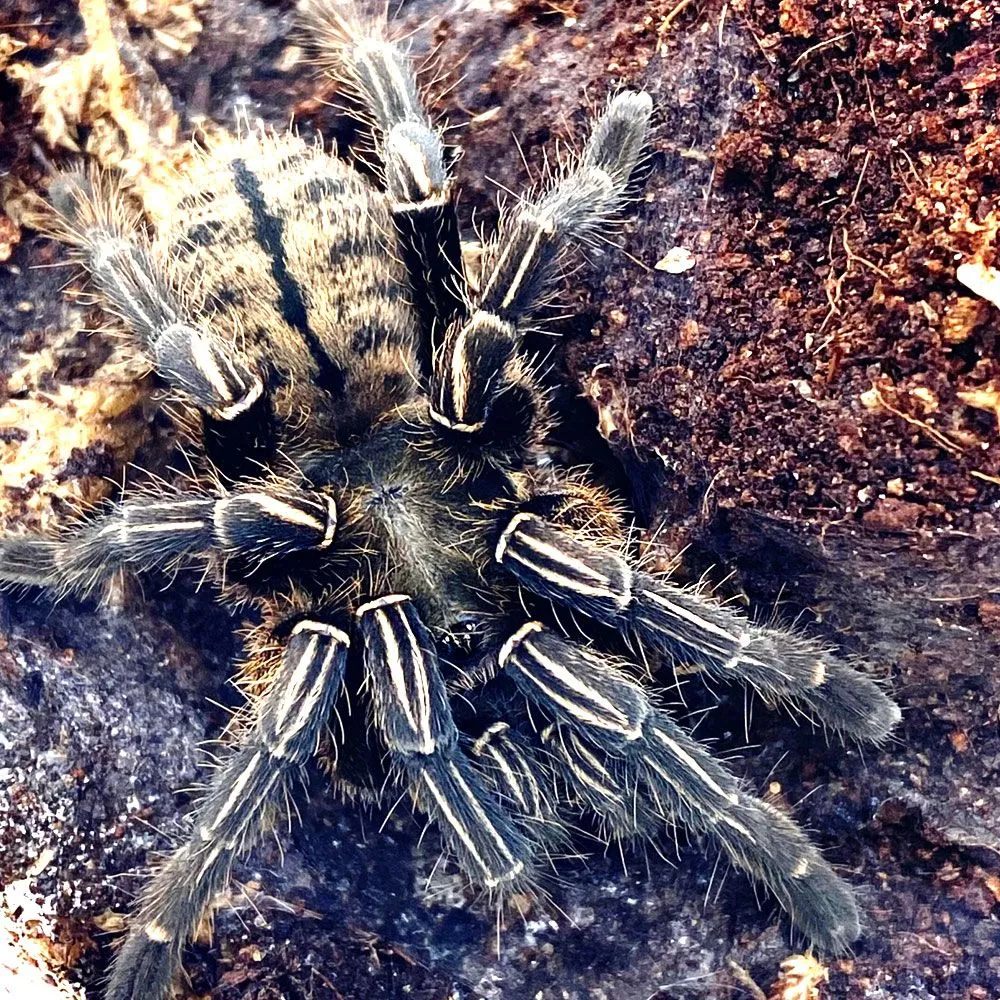
The eating habits of Zebra Tarantulas are fascinating, offering a glimpse into their natural behavior. They are well-adapted to their environment, with specialized hunting and feeding techniques. Their eating habits are also impacted by environmental factors. Understanding these details allows for better care and appreciation of these creatures. They have also developed various behaviors that ensure their survival. These behaviors help in their daily living.
Unique Aspects of their feeding
Zebra Tarantulas have several unique eating habits that set them apart. They often create a web around their prey to prevent escape. Also, they have a unique method of digesting their food. The digestion process often involves injecting digestive enzymes onto the prey to break it down before consumption. Some will also sometimes hide their food, especially when they are full. These aspects of their feeding provide additional insight into their survival strategies. Observing these behaviors in captivity is very educational.
Digestion Process
The Zebra Tarantula’s digestion process is a unique biological mechanism. They inject venom containing digestive enzymes into their prey. These enzymes break down the prey’s tissues, allowing the tarantula to suck up the liquefied nutrients. This external digestion is a common trait among spiders. They then consume the pre-digested meal. They are very efficient feeders. Their digestive system is well-suited for processing insect-based diets. Their feeding process is a fascinating part of their biology.
Conclusion
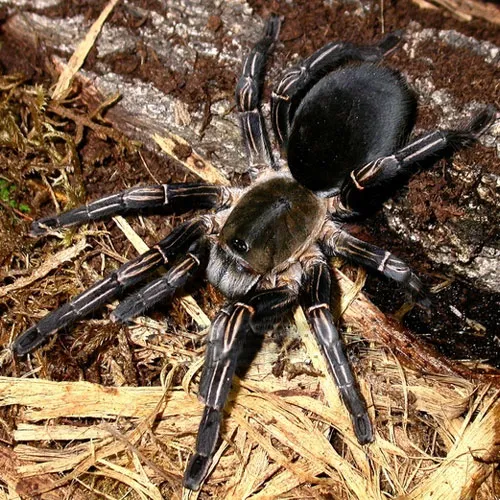
In conclusion, understanding the eating habits of Zebra Tarantulas is essential for their proper care and appreciation. They are fascinating creatures with unique feeding behaviors and adaptations. Providing the right diet and environment ensures they thrive in captivity. By adhering to these guidelines, owners can provide for a healthy and enriching life for their Zebra Tarantula. Their distinctive traits and eating habits make them a captivating pet. Caring for a Zebra Tarantula is a rewarding experience.
